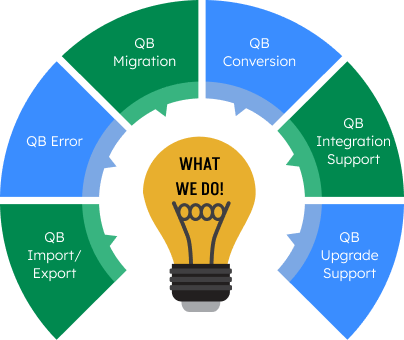Keeping QuickBooks Online (QBO) records accurate requires you to reconcile your data. It verifies that what appears in your accounting software also appears on your bank and credit card records. Nevertheless, it is possible that you must remove an entry for reconciliation as a result of errors, alterations, or inaccuracies. This article explains how to cancel a reconciliation in QuickBooks Online, as well as why and what alternatives to use.
Table of Contents
- 1 Undo or Delete Bank Reconciliation in QuickBooks Online Versions
- 2 Undo Bank Reconciliation in QuickBooks Online Accountant (QBOA)
- 3 Why We Need to Undo or Delete Reconciliation in QuickBooks Online?
- 4 Conclusion
- 5 Frequently Asked Questions
- 5.1 Q 1: Can I remove a reconciliation from my QuickBooks account?
- 5.2 Q 2: When is unreconciling different from undoing?
- 5.3 Q 3: If I end a reconciliation process, will it have any influence on my old financial statements?
- 5.4 Q 4: Can a reconciliation that happened several months ago be reversed?
- 5.5 Q 5: What can I do if I have to unreconcile a single transaction?
- 5.6 Q 6: Upon undoing, can a backup file be reconciled?
- 5.7 Q 7: What steps should I take if I’m not confident about undoing a reconciliation?
- 6 Adams Williams
Undo or Delete Bank Reconciliation in QuickBooks Online Versions
If you’re using the standard version of QuickBooks Online (QBO) instead of QBOA, you can still undo reconciliations manually by following the steps below:
- Go to the Accounting menu and open the Chart of Accounts.
- Select View Register after finding the account that has the reconciled transaction.
- Find the transaction you want to change.
- In the Reconcile Status column, which has a checkmark next to it, click the box until the status changes from “R” to blank.
- To confirm the changes, click Save.
After completing these steps, your reconciliation will be undone, and the selected transactions will be marked as unreconciled.
Undo Bank Reconciliation in QuickBooks Online Accountant (QBOA)
If you’re using QuickBooks Online Accountant (QBOA) to manage your financial records—or working with a professional accountant who does you can follow the steps below to undo or reverse a bank reconciliation in QuickBooks Online Accountant.
Step 1: Prepare Before Undoing a Bank Reconciliation in QBOA
Before you proceed, make sure to complete the following preparatory steps:
- Download all reconciliation attachments linked to the account: Once a reconciliation is undone, all attached files will be permanently deleted.
- Understand the effect on future reconciliations: Undoing one month’s reconciliation automatically reverses all subsequent months. For instance, if you undo February’s reconciliation in May, both March and April reconciliations will also be undone. To prevent errors, always start from the most recent reconciliation and move backward.
- Identify manually entered transactions: You cannot undo reconciliations for transactions entered manually. Use the transaction audit history to locate and review these records before proceeding.
Once you’ve completed these checks, you can move on to the next step to undo the reconciliation in QuickBooks Online Accountant.
Step 2: Steps to Undo Bank Reconciliation in QuickBooks Online Accountant
Here’s how to undo a bank reconciliation in QBOA:
- Sign in to QuickBooks Online Accountant on your system.
- Open the client’s company file, then navigate to the Transactions tab.
- Select Reconcile from the options available.
- Click History by Account and choose the appropriate account and date range from the drop-down lists.
- Locate the specific reconciliation you want to undo, then select View Report to review the reconciliation details.
- Check for any discrepancies or adjustments that need to be made.
- When ready, click the dropdown in the Action column and select Undo.
- Confirm your choice by clicking Yes, and then select Undo again to finalize.
You have now successfully undone the bank reconciliation in QuickBooks Online Accountant. Next, let’s see how to perform the same task in the regular QuickBooks Online version.
Struggling With Accounting or Bookkeeping?
Talk to our experts in minutes — No wait time!
- Free Consultation
- Fast Response
- Trusted Experts

Why We Need to Undo or Delete Reconciliation in QuickBooks Online?
Various situations may encourage you to reverse a reconciliation:
- Errors in Data Entry: Inaccurate reconciliation can occur due to mistakes while entering transaction data.
- Missing Transactions: Reconciliation cannot be completed if transactions are not imported or entered into QuickBooks Online beforehand.
- A Balance That Does Not Match: An incorrect beginning balance can cause reconciliation discrepancies.
- Duplicate Transactions: Entering the same transaction twice will create issues.
- Bank Errors: If a bank statement contains errors, you may need to reverse the reconciliation after corrections.
- Sorting Transactions to the Wrong Account: Selecting the wrong account during reconciliation can cause problems.
You may also read this: Mini Reconciliation in QuickBooks
Things to Keep in Mind Before Deleting
Consider the following prior to reversing a reconciliation process:
- Impact on Reporting: Undoing a reconciliation will affect your financial reports, including the Balance Sheet and Bank Reconciliation Report, for that period.
- Audit Trail: QuickBooks Online provides an audit log to track the process of undoing a reconciliation or unreconciling transactions.
- Timing: If multiple errors exist across different periods, it’s best to reverse the most recent reconciliation first.
- Find the Main Reason Behind the Issue: Investigate why the reconciliation broke to prevent repeating the same mistakes when re-establishing it.
- Backup (Not Directly in QuickBooks Online): QuickBooks Online automatically backs up your data, but be aware of the impact of major changes and consult an accountant if unsure.
Conclusion
Even though QuickBooks Online doesn’t provide a remove reconciliation button, you can still effectively un-reconcile any transaction. Online Accountant users can undo actions more simply, whereas other users must take action on reconciled transactions manually. First, look at how what happened affects your financial records, then handle the reasons for the problem before reconciling again.
Frequently Asked Questions
Q 1: Can I remove a reconciliation from my QuickBooks account?
Ans: You cannot remove a reconciliation from QuickBooks Online by deleting it. Alternatively, you can handle each transaction separately or uncheck the Reconciliation option (in QuickBooks Online Accountant).
Q 2: When is unreconciling different from undoing?
Ans: From QBO Accountant, the option to “undo” a reconciliation will reverse everything at once. Changing the status of individual transactions is known as “un-reconciling.”
Q 3: If I end a reconciliation process, will it have any influence on my old financial statements?
Ans: Reversing a reconciliation removes the reconciled status of those transactions and could affect your Bank Reconciliation Report as well as other relevant reports for that period.
Q 4: Can a reconciliation that happened several months ago be reversed?
Ans: Reconciliations can be undone from your menu. If there are many incorrect reconciliations, it’s usually better to address the most recent one first.
Q 5: What can I do if I have to unreconcile a single transaction?
Ans: On the Chart of Accounts page, check the register for that account and click on the “R” in the checkbox next to the transaction you want to un-reconcile.
Q 6: Upon undoing, can a backup file be reconciled?
Ans: Yes, once you’ve corrected an incorrect reconciliation, you are free to start it again for that same time.
Q 7: What steps should I take if I’m not confident about undoing a reconciliation?
Ans: If you don’t know for sure, it would help to work with a ProAdvisor or an accountant. They allow you to learn the reason for the error and solve it without ruining your financial records.

Adams Williams
Adams Williams is a seasoned accounting professional with over 4 years of experience in bookkeeping, financial reporting, and business accounting solutions. Specializing in QuickBooks software, Adams combines technical expertise with clear, accessible content writing to help businesses streamline their financial processes. His insightful guides and how-to articles are crafted to assist both beginners and seasoned users in navigating accounting software with confidence.



